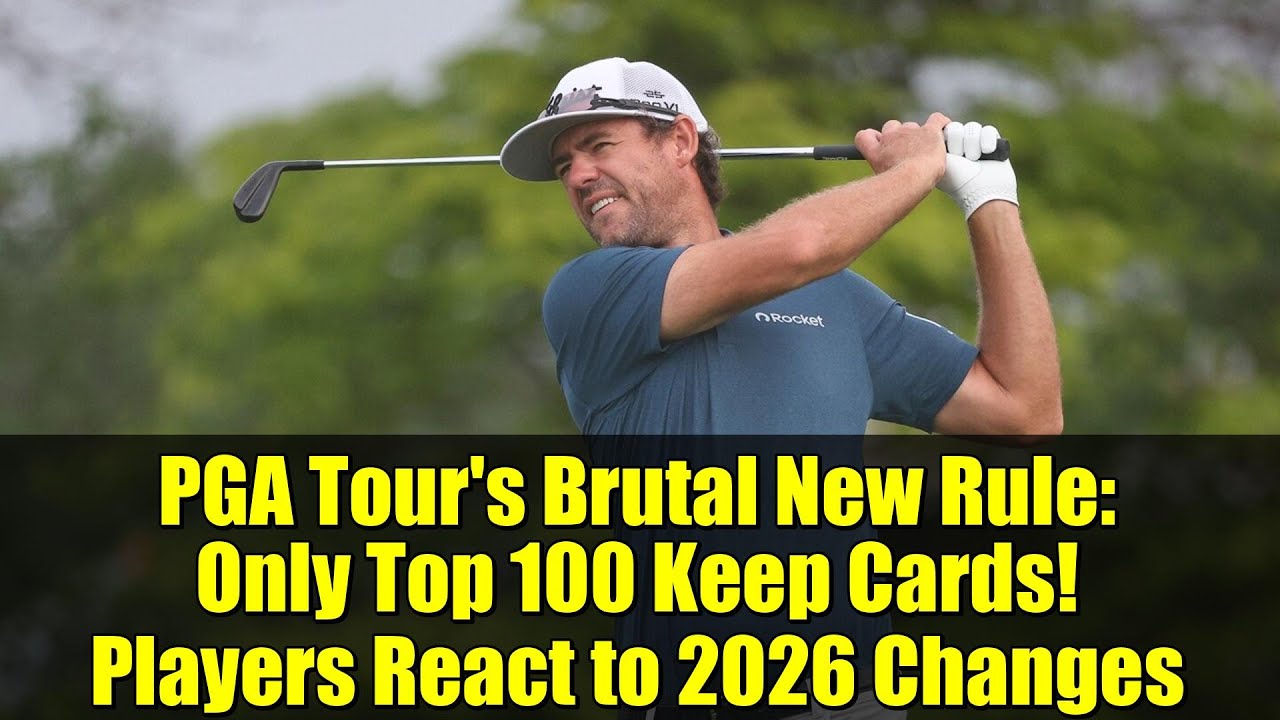The PGA Tour is making a massive change for 2026 – cutting fully exempt players from 125 to just 100! This means 25 fewer tour cards and way more pressure on players fighting for their livelihood.
In this video, we break down:
– Why the PGA Tour reduced exempt status from top 125 to top 100
– How this affects players on the bubble like Peter Malnati and Lanto Griffin
– The math behind the pressure: 114 FedExCup points separate safety from conditional status
– What conditional status (101-125) actually means for playing opportunities
– How fall events become even more crucial for players’ careers
– Real reactions from tour pros dealing with this new reality
This change is part of the Tour’s broader 2026 overhaul, including field size adjustments and new eligibility requirements. For players currently ranked between 100-125, every shot matters more than ever.
The fall schedule has always been stressful, but now it’s absolutely brutal. We’ll explain exactly what players need to do to secure their cards and what happens if they don’t make the cut.
Whether you’re a casual golf fan or follow every tournament, this change will reshape professional golf as we know it. The pressure is real, the stakes are higher, and only the best 100 players will have guaranteed starts in 2026.
#PGATour #Golf #FedExCup #TourCard #ProfessionalGolf #2026Changes
What if the very thing that makes golfers great, relentless competition, just got a whole lot more intense? The PGA Tour is shaking things up and players are feeling the heat like never before. Starting next season, a seismic shift in the FedEx Cup point system will slash the number of fully exempt players from 125 to 100. This isn’t just a number change, it’s a gamecher. Let’s break it down. Imagine you’re a PGA Tour pro. For years, finishing in the top 125 guaranteed you a seat at the table for the next season. But now that safety net is gone. The new cutoff at 100 means players must claw for every point. Knowing one bad tournament could drop them into uncharted territory. Take Peter Malnatti, who currently sits 179th on the points list. His recent victory at the 2024 Valpar Championship gives him a lifeline, but he admits the stress is higher. There are fewer spots and the stakes feel like they’ve been cranked up. To put this into perspective, the gap between 125th and 100th on the current points list is 114 points. That’s roughly the difference between a mid-tier finish and a top five performance at a non- major event. Melnatti calls it a big difference. And he’s not wrong. For players hovering near the top 100 bubble, every tournament is now a high stakes gamble. But here’s where it gets tricky. What happens to the players who finish between 101st and 125th. The tour hasn’t clarified how many events these golfers will actually get to play in next year. Lanto Griffin, who narrowly missed the top 100 last season and had to battle through Q school to retain his status, warns that the walls are tighter now. This year, he’s playing seven of the eight fall events, but even he admits nobody really knows what 110th or 120th will get you. The tour claims the system will still offer a decent number of starts for those outside the top 100, but the math doesn’t lie. The points disparity between 150th and 70th is staggering. And Griffin’s blunt assessment, you obviously need to play well, highlights the brutal reality. And this is the part most people miss. This isn’t just about numbers. It’s about the psychological toll. Players who once had a safety net now face a cliff. Is this a necessary evolution to elevate the tour’s competitiveness? Or is it unfairly pressuring already stressed athletes? We’d love to hear your take. Does this new system make the PGA Tour more exciting to watch, or does it risk alienating players who’ve worked hard to earn their spots? Drop your thoughts in the comments. Let’s spark a real conversation.







